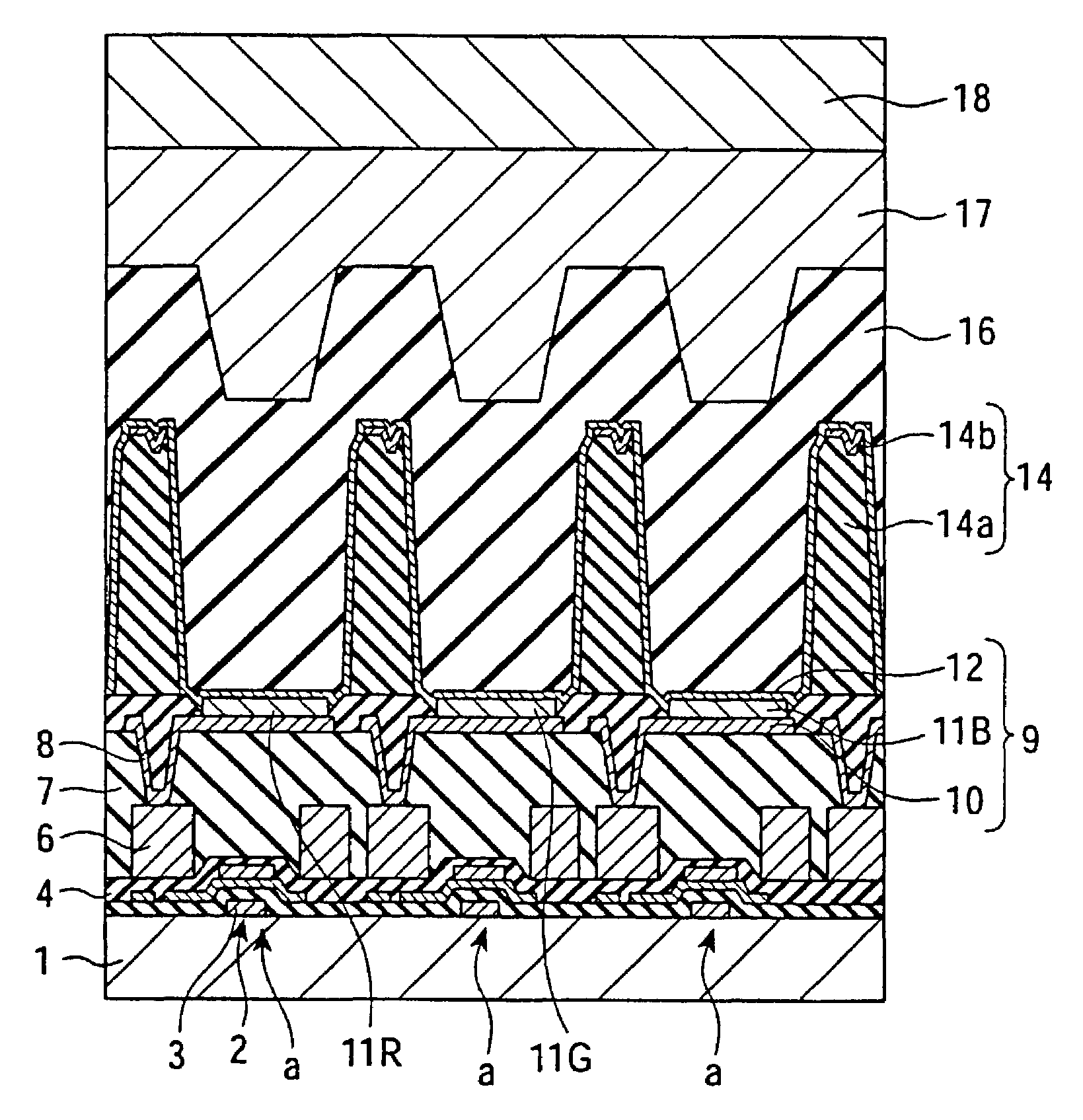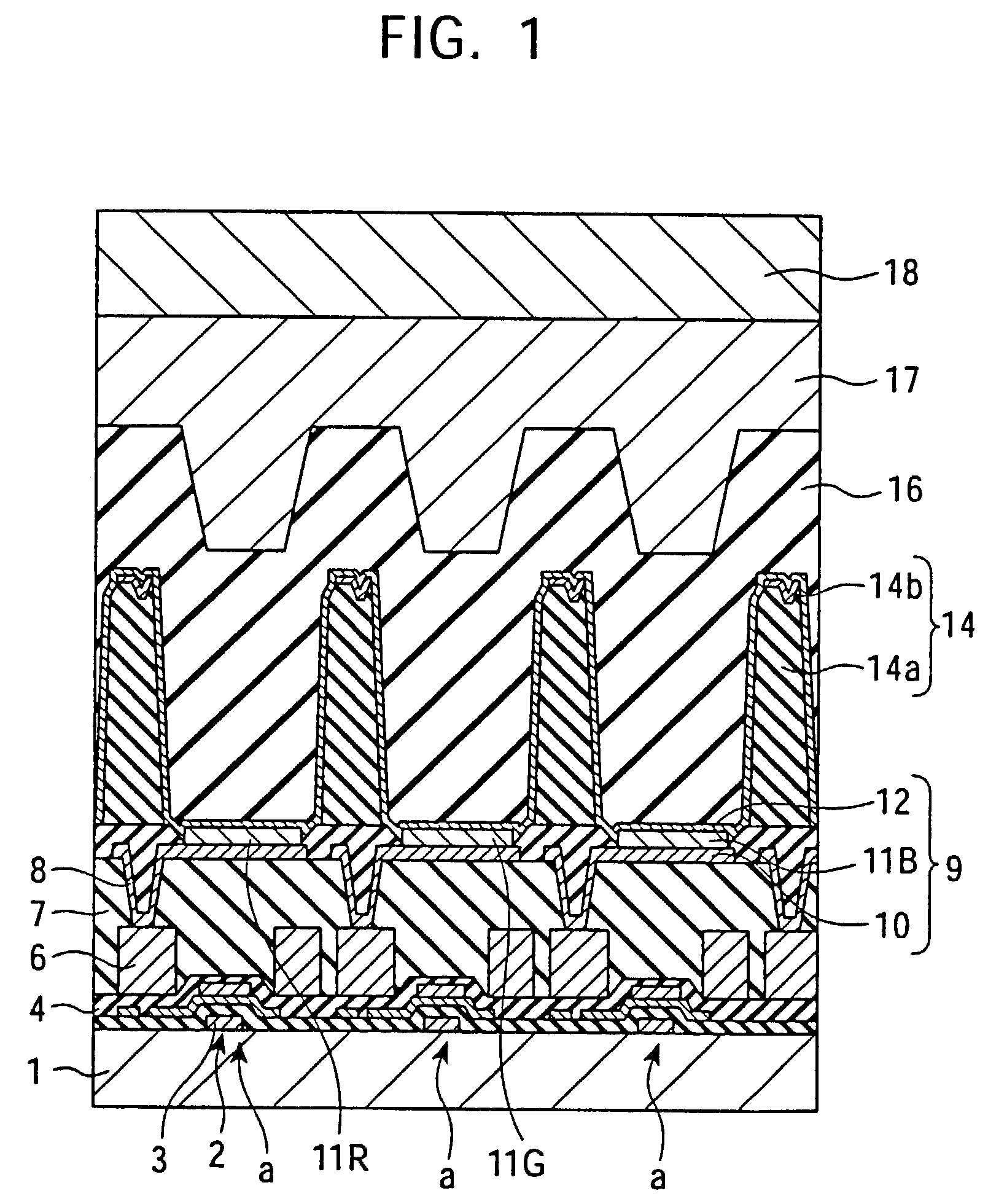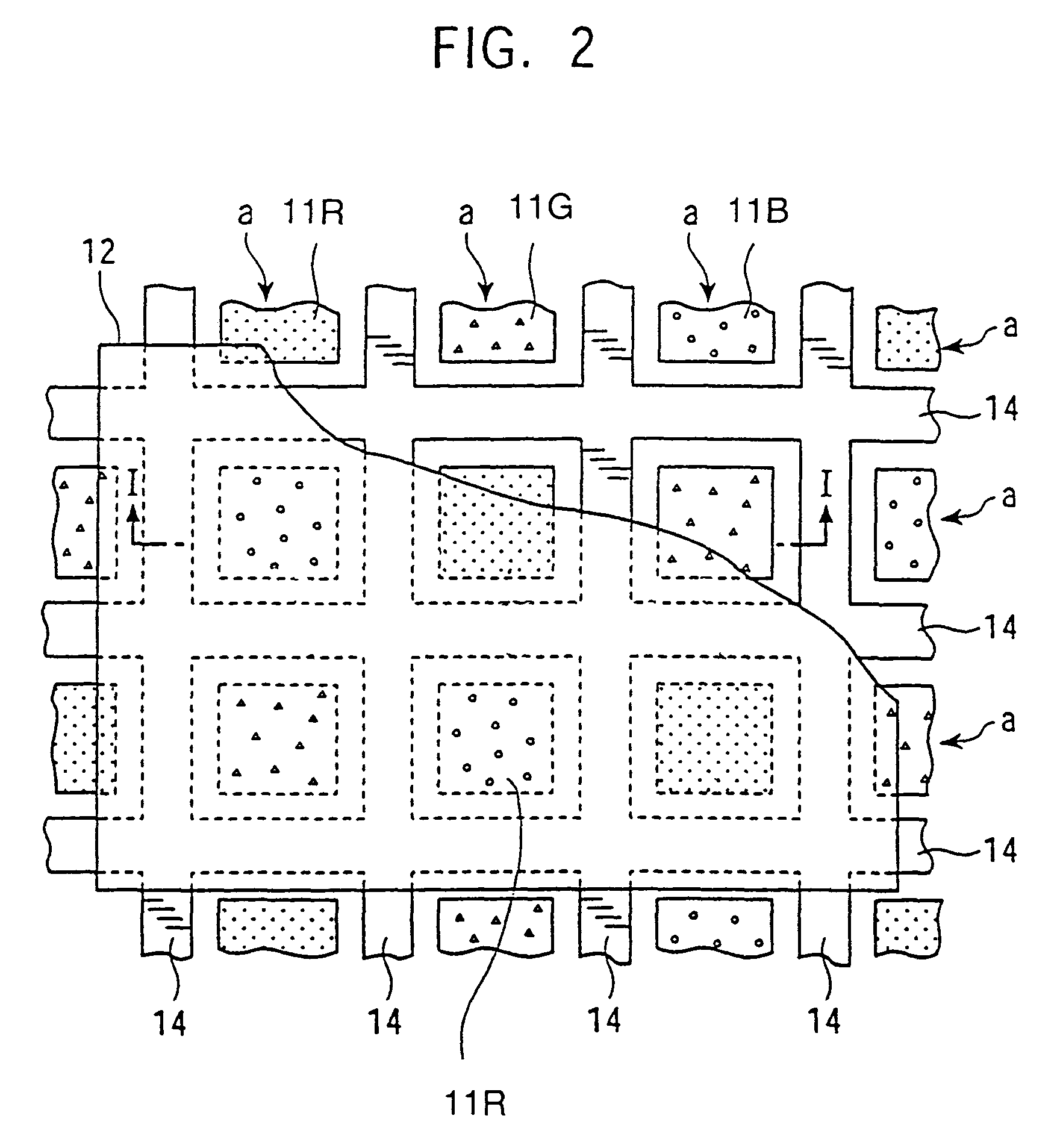Display apparatus and method for fabricating the same
a technology of display apparatus and display device, which is applied in the manufacture of electric discharge tubes/lamps, cold cathode manufacturing, and the manufacture of electromechanical systems, etc., can solve the problems of significant degradation of display properties, voltage drop, and damage to devices, and achieve the effect of improving display properties and sufficient luminous intensity of organic el devices
- Summary
- Abstract
- Description
- Claims
- Application Information
AI Technical Summary
Benefits of technology
Problems solved by technology
Method used
Image
Examples
Embodiment Construction
[0054]The present invention will be detailed referring to the attached drawings.
[0055]FIG. 1 is a schematic sectional view showing a display area of a display apparatus according to an example of the present invention. FIG. 2 is a schematic plan view showing the display area of the display apparatus shown in FIG. 1. FIG. 1 is a view in section along the line I—I in FIG. 2. Among various structural components which will be explained hereinafter in order from those closer to the lower layer side, FIG. 1 now shows only organic layers 11R, 11G, 11B, an upper common electrode 12 and ribs 14. The organic EL display apparatus shown in these figures is an active-matrix-type color display apparatus, the constitution of which will be explained with reference also to additional drawings of FIGS. 3A, 3B, 3C, 4, 5A, 5B. 5C, 6 and 7 following the fabrication procedures thereof.
[0056]First as shown in FIG. 3A, a thin-film transistor 2 is fabricated for every pixel “a” on a substrate 1. A gate elec...
PUM
 Login to View More
Login to View More Abstract
Description
Claims
Application Information
 Login to View More
Login to View More - R&D
- Intellectual Property
- Life Sciences
- Materials
- Tech Scout
- Unparalleled Data Quality
- Higher Quality Content
- 60% Fewer Hallucinations
Browse by: Latest US Patents, China's latest patents, Technical Efficacy Thesaurus, Application Domain, Technology Topic, Popular Technical Reports.
© 2025 PatSnap. All rights reserved.Legal|Privacy policy|Modern Slavery Act Transparency Statement|Sitemap|About US| Contact US: help@patsnap.com



